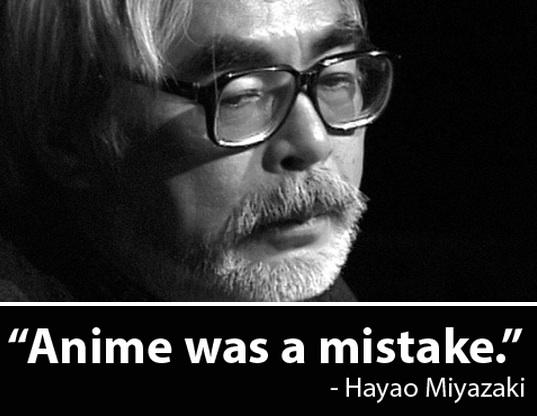
Welcome to the wild, wonderful, and let’s face it, often cringeworthy world of weeb culture. Here, grown-ass adults argue about anime waifus with the passion of film nerds debating Kubrick films. In this culture, “kawaii” is considered a valid English word.
Whether you’re a confused normie trying to understand why your friend suddenly speaks in broken Japanese, or a closet weeb ready to embrace your true form, this guide will help you decode the mysteries of this unique subculture. And, it will do so faster than you can say “omae wa mou shindeiru.”
More Guides Coming Soon! Bookmark this page, if that’s something people still do (CTRL/CMD + D)!
Table of Contents
What Is a Weeb? (The Brutally Honest Definition)
A weeb is a non-Japanese person who has developed an enthusiastic obsession with Japanese culture, particularly anime and manga. This obsession can make regular people slowly back away at parties and your friends and family recommend you to a therapist.
The Weeb Spectrum: It’s More Complex Than You Think
Level 1: Gateway Weebs
- Watched Naruto on Cartoon Network
- Thinks anime is “pretty cool”
- Still calls it “Japanese cartoons”
- Innocent. Pure. Doomed.
Level 2: Casual Weebs
- Has a Crunchyroll subscription
- Owns some anime merchandise (tastefully displayed)
- Uses “kawaii” unironically but only around other weebs
- Knows the difference between anime and hentai (and keeps it that way)
Level 3: Committed Weebs
- Seasonal anime watcher with strong opinions
- Manga collection requires its own bookshelf
- Has attended at least one convention
- Argues about sub vs dub with religious fervor
Level 4: Advanced Weebs
- Imports Japanese snacks and media
- Learning Japanese (for the anime, obviously)
- Cosplay hobby that’s definitely “just for fun”
- Room looks like Tokyo exploded in it
Level 5: Terminal Weebs
- Lives in Japan or desperately wants to
- Social media entirely in Japanese with English subtitles
- Has transcended mere mortal understanding
- Uses “kawaii” unironically around normies.
Weeb Culture Decoded: The Essential Elements
The Sacred Texts (Anime & Manga)
Every weeb has their “gateway drug”—that first anime that opened the floodgates to a lifetime of questionable financial decisions. Common suspects include:
Gateway Anime Hall of Fame:
- Naruto: “Believe it!” (Please don’t)
- Dragon Ball Z: Screaming = power scaling
- Attack on Titan: Depression with giants
- Death Note: Philosophy majors’ favorite
- Demon Slayer: Breathing is power now
- My Hero Academia: Superheroes but make it Japanese
Manga: The “I Read It First” Complex. Reading manga makes weebs feel intellectually superior to anime-only peasants. It’s like reading the book before the movie, except the book is read backwards and has more panty shots.
The Language Barrier (That Doesn’t Stop Anyone)
Weebs sprinkle Japanese words into English conversations like seasoning, except they’re usually using the wrong seasoning for the dish. Common “Japanglish” includes:
- Kawaii: Cute (overused to death)
- Baka: Stupid/idiot (accurate self-description)
- Senpai: Senior/mentor (not a pick-up line)
- Waifu: 2D girlfriend (concerning and sad)
- Husbando: 2D boyfriend (equally concerning and equally sad)
Convention Culture: Where Weebs Congregate
Anime conventions are like Comic-Con but with more questionable hygiene. They are magical places where:
- Cosplay budgets exceed rent money
- Adults argue about fictional character ages
- The smell is… distinctive
- Everyone becomes an expert photographer
- Merchandise dealers enable poor financial choices
The Waifu Wars: Serious Business
Nothing divides the community faster than waifu preferences. These aren’t just cartoon crushes. They’re deeply held philosophical positions that can determine friendships, forum bans, and occasionally, restraining orders.
Popular waifu archetypes include:
- Tsundere: Mean but secretly nice (red flags as personality)
- Yandere: Sweet but psychotic (literal red flags)
- Kuudere: Cool and distant (emotionally unavailable)
- Dandere: Shy and quiet (introvert fantasy)
The Weeb Ecosystem: Natural Habitats and Behaviors
Online Territories
Reddit: r/anime serves as parliament, where seasonal rankings are debated with PhD-level intensity.
Sustenance:
- Ramen: The only Japanese food they know (instant counts)
- Pocky: Overpriced cookie sticks from the Asian grocery store
- Energy drinks: Staying up for 3 AM anime releases
- Tears: From emotionally devastating anime endings
Mating Rituals
Courtship:
- Discovering shared anime preferences
- Arguing about best girls/boys
- Watching anime “together” online
- Attending conventions as a couple
- Joint waifu/husbando acceptance
Weeb Meme Gallery: The Cultural Artifacts
Classic Memes That Defined a Generation
“Anime was a mistake”

- Context: Falsely attributed to Hayao Miyazaki
- Usage: When anime gets too weird (frequently)
- Reality: He never said this, but he should have
“Omae wa mou shindeiru” / “Nani?!”

- Context: Fist of the North Star
- Usage: When you’re about to destroy someone with facts
- Translation: “You are already dead” / “What?!”
Naruto Running

- Context: Running with arms behind back like Naruto
- Usage: Getting places faster (scientifically unproven)
- Peak: Area 51 raid of 2019
Ara Ara

- Context: Older female character expression
- Usage: Weeb panic response
- Translation: “Oh my” (but make it suggestive)
Modern Weeb Memes (2020s+)
“POV: You have no bitches”
- Shows anime girl saying this
- Self-roast culture at its finest
- Accurate demographic targeting
“Least [adjective] anime fan”
- Shows extremely [adjective] person
- Self-aware community humor
- “Least obsessed anime fan:” shows room covered in merchandise
“Genshin Impact players”
- Automatic roast material
- Anime game addiction jokes
- Touch grass recommendations
The Dark Side: When Weeb Goes Wrong
Red Flags in Weeb Culture
Not all weeb behavior is harmless fun. Some warning signs include:
The Japanophile Complex: When someone thinks Japan is a magical anime paradise where everyone is kawaii and life problems don’t exist. Reality check: Japan has taxes, morning commutes, and seasonal depression just like everywhere else.
Cultural Appropriation Confusion: Wearing a kimono to prom because “anime taught me about Japanese culture” while knowing nothing about actual Japanese customs, history, or social issues.
The Superiority Complex: “Western media is trash, only anime has deep storytelling.” Sir, you cried at Naruto filler episodes.
Unhealthy Obsession Patterns: When anime becomes a substitute for real relationships, responsibilities, and personal growth. 2D characters won’t help you file taxes or hold your hair back when you’re sick.
Weeb vs. Otaku vs. Weeaboo: The Holy Trinity Explained
Weeb
- Definition: Anime fan who knows they’re being ridiculous
- Attitude: Self-aware, often ironic
- Usage: “Yeah, I’m a weeb, so what?”
- Connotation: Mostly reclaimed and positive
Weeaboo
- Definition: Non-Japanese person obsessed with Japanese culture
- Attitude: Lacks self-awareness, genuinely believes anime = real Japan
- Usage: Usually an insult
- Connotation: Cringey and problematic
Otaku
- Definition: Japanese term for obsessive fan (any subject)
- Attitude: Intense dedication to specific interests
- Usage: “I’m an anime otaku”
- Connotation: Neutral to positive in the West, mixed in Japan
The Simple Version:
- Weeb = Self-aware anime fan
- Weeaboo = Cringe anime fan
- Otaku = Serious anime fan
Read more about Otaku vs Weeb…
How to Interact with Weebs: A Normie’s Guide
Do’s:
- Ask about their favorite anime (prepare for a lecture)
- Respect their merchandise collections
- Don’t touch their figures without permission
- Acknowledge that anime isn’t “just cartoons”
Don’ts:
- Call it “Chinese cartoons” (nuclear option)
- Ask if they watch hentai (awkward for everyone) P.S. They do
- Suggest they “get a real hobby”
- Touch their limited edition anything
Conversation Starters:
- “What anime should I start with?” (They live for this)
- “I saw this anime thing on TikTok…” (They’ll correct you extensively)
- “Is Avatar anime?” (Enjoy the 30-minute debate)
Merchandise Addiction
The weeb economy runs on plastic figures, body pillows, and items that serve no functional purpose except displaying one’s power level. Popular purchases include:
Figures: $20-$500+ for detailed statues of fictional characters Posters: Wall decoration featuring anime girls in questionable poses Clothing: T-shirts with Japanese text they can’t read Body pillows: We don’t ask, they don’t tell Blu-rays: $60 for 4 episodes because “supporting the industry”
Convention Economics
Anime conventions extract money through:
- Admission fees: $40-100+ to enter paradise
- Merchandise dealers: Financial ruin in vendor hall form
- Food: $15 convention center hot dogs
- Hotel rooms: Split between six body-odor-radiating people because it’s the only way they can afford it
- Cosplay supplies: Because “I’ll totally wear this again”
Subscription Services
Monthly weeb taxes include:
- Crunchyroll: $8/month for anime streaming
- Hulu: Alternative anime sources
- Japanese snack boxes: $30/month for overpriced Pocky that you can get at Target
- Figure subscriptions: Surprise bankruptcy in a box
Regional Variations: Weeb Culture Around the World

American
- Loud and proud
- Convention culture dominators
- Dub vs sub civil wars
- “Sub with Japanese audio” preferences
European
- More subtle integration
- Better at actual Japanese language
- Less convention access (tragic)
- Manga café culture
Australian
- Everything costs twice as much
- Import shipping costs exceed rent
- “Dollarydoos” spent on Japanese media
- Upside-down anime viewing
Canadian
- Polite about their obsessions
- “Sorry for being a weeb, eh?” (apologies for this extra stupid joke)
- Bilingual anime consumption
- Winter hibernation anime binges
The Future of Weeb Culture: 2025 and Beyond
Mainstream Integration
Anime has gone from niche subculture to mainstream entertainment. Your mom watches Studio Ghibli films, your boss quotes Dragon Ball Z, and anime references appear in Super Bowl commercials. We’ve won, but victory tastes suspiciously like corporate sanitization.
Technology Impact
- VR Anime: Ready Player One but with more waifus
- AI Companions: Chatbots with anime girl avatars (concerning)
- Blockchain Collectibles: NFTs but make them anime girls
- Streaming Evolution: Netflix vs Crunchyroll corporate wars
Cultural Predictions
- Anime fashion becomes mainstream (already happening)
- Japanese language courses see massive enrollment
- Convention culture expands beyond anime
- “Normie” becomes the minority
Conclusion: Embrace the Weeb Within
Look, we’ve come this far together. If you’re still reading, you’re either:
A) Already a weeb (welcome to self-awareness)
B) Becoming a one (resistance is futile)
C) A very dedicated researcher (respect)
D) Lost and confused (understandable)
The culture isn’t going anywhere. It’s evolved from a niche internet subculture into a global phenomenon that influences fashion, entertainment, and how we interact online. Whether you embrace it ironically or unironically, the weebs have fundamentally changed popular culture.
The key to healthy behavior is self-awareness. Enjoy your anime, collect your figures, learn Japanese, attend conventions. But remember: Japan is a real country with real people and real social issues beyond what anime portrays.
So go forth, watch your seasonal anime, argue about best girls, and remember: we’re all a little bit weebish inside. Some of us are just better at hiding it than others.
Final Pro Tip: If someone calls you a weeb, the correct response is “Yeah, and?” Own it. The insult only works if you’re ashamed, and honestly, there are worse things to be obsessed with than well-animated stories and compelling characters… like the waifu thing… like, seriously, what the hell?
Now excuse me while I go watch the latest episode of whatever seasonal anime is destroying my emotions this week. It’s not a phase, mom—it’s a lifestyle.